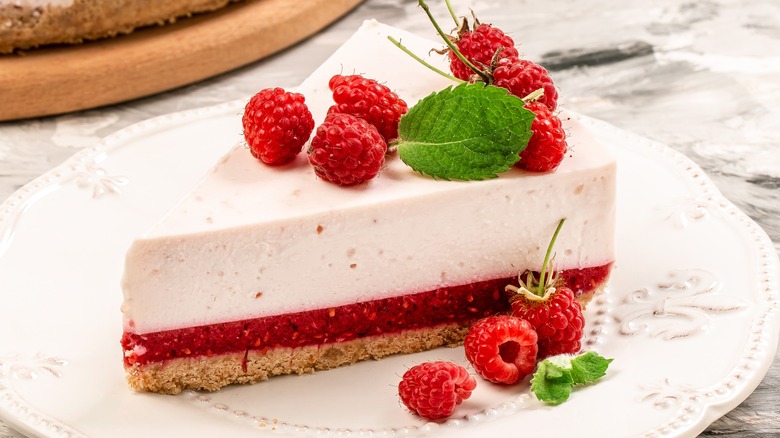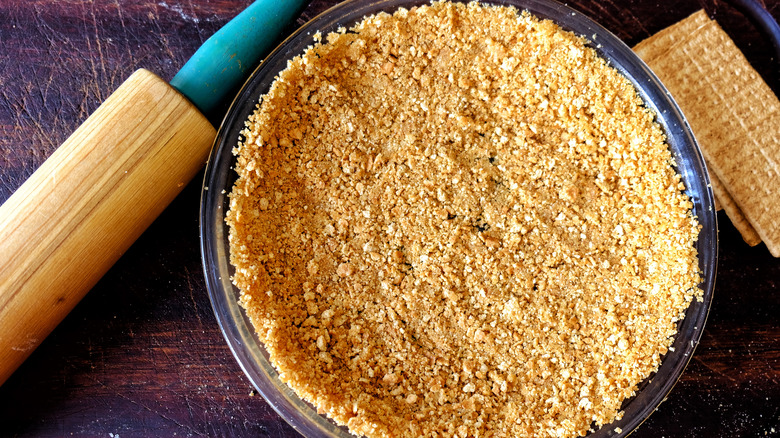The Cheesecake Crust Mistake You Must Stop Making
Nothing says celebration like making a special dessert. Whether you're going for a multi-layered birthday cake, a fondant masterpiece a la "Cake Boss," or cookies, a treat made from the heart always tastes extra sweet. But some of these desserts are harder to make than others. Cheesecake, while high in deliciousness, is also definitely up there in terms of how finicky it can be. You've got to make a crust, which is usually pressed into the pan. Then there's the filling, which can crack in the oven if you overheat it, overbeat the eggs used to make it, or underestimate how moist your oven needs to be when baking it, per Land O'Lakes. And even when things seem like they're going well, you can be met with a nasty surprise under the surface. Does this sound familiar?
You pour your cheesecake filling into the crust to bake, set it in a water bath, and let it cook. You pull the cheesecake out of the oven to find the filling perfectly smooth and set, but when you take a bite of your first slice, the truth is revealed — the crust on the bottom is a soggy mess. So what gives? If your cheesecake crust comes out soggy or mushy every time, the big mistake might not be what you're doing so much as what you haven't been doing. There's actually one simple tip that could change everything.
You've got to par-bake it
The key to avoiding that dreaded, mushy bottom crust when baking a cheesecake is pre-baking the crust (via Allrecipes). Also known as blind-baking, this practice ensures that the crust will crisp up and be able to resist soaking up all of the moisture from your cheesecake filling as it cooks. This technique is frequently used for all sorts of pies, including those that call for a traditional short-crust pastry made with butter and flour. Whether your cheesecake crust is made with graham cracker or cookie crumbs, baking it for about 10 minutes, then letting it cool before adding your cheesecake filling, is the best way to prevent what the folks over at The Great British Baking Show would call a "soggy bottom."
What if you're really, really paranoid about having a soggy cheesecake crust? You might be able to use one of King Arthur Baking's tips. They recommend sprinkling "crust dust," a combo of equal parts sugar and flour, on the bottom pie crust before adding the filling. For a graham cracker crust recipe, we'd recommend pre-baking your crust until it seems set, then sprinkling on some crust dust, followed by your filling. Bake your cheesecake for the correct amount of time as called for in the recipe you're following, and you should be able to cut creamy slices of cheesecake with a crisp, sweet crust that holds its shape perfectly instead of dissolving into a mushy smear on your plate.

